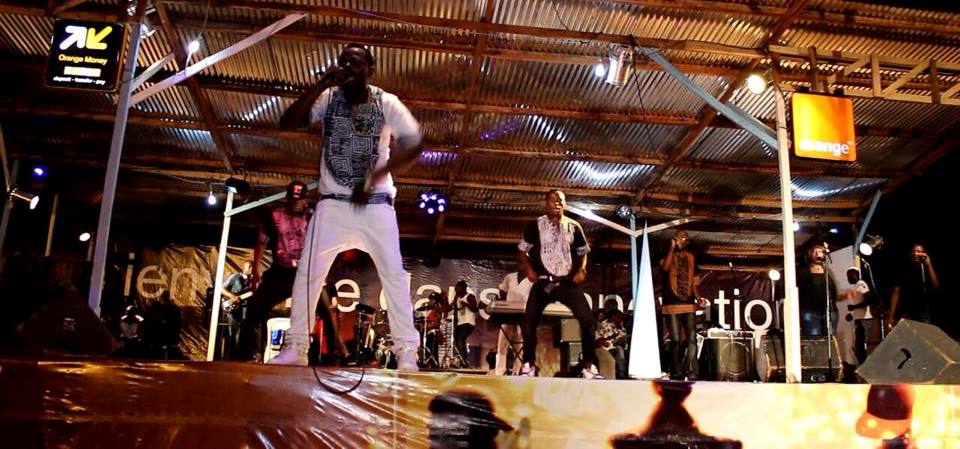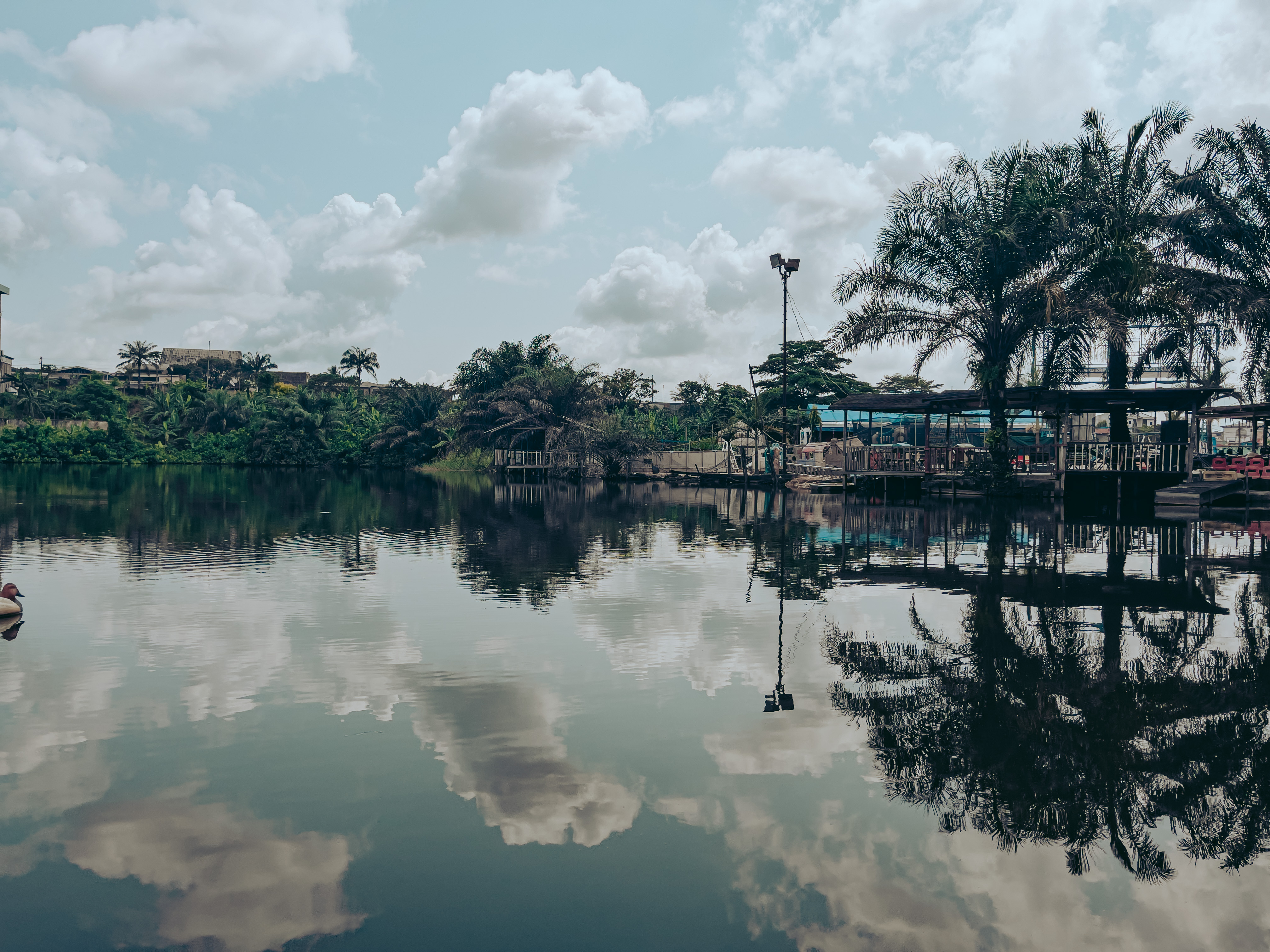|
Bend-skin
Bend-skin (''bend skin'') is a kind of urban Cameroonian popular music. Kouchouam Mbada is the best known group associated with the genre. Several other artists have over the years contributed to the growth and popularity of bend skin. It is related to mangambeu, and is played using only drums and maraca A maraca (), sometimes called shaker or chac-chac, is a rattle which appears in many genres of Caribbean and Latin music. It is shaken by a handle and usually played as part of a pair. Maracas (from Guaraní ), also known as tamaracas, were r ...s (often made from soda cans), with a vocalist who both sings and raps. It is often sung in Medumba which is the language of the Bangangte people and in many other Bamileke dialects. Bend-skin became popular in 1993 in the New-Bell Banganté's neighbourhood, amid a time of economic depression. Although gaining grounds in most urban settings in Cameroon, Bend-skin is closely associated with the Western Province of Cameroon (the ... [...More Info...] [...Related Items...] OR: [Wikipedia] [Google] [Baidu] |
Michael Kiessou
Anacle Michael Ghounam Kiessou better known by his stage name Michael Kiessou is a Cameroonian singer and entertainer. He came to wide public attention with his song ''Bennam.'' from his debut EP ''Partage''https://itunes.apple.com/us/album/partage/id891947896 released on 2 April 2014. Twice-nominated for the Canal 2'Or Act 10 (Canal 2 International Awards), he won the Best video award with ''Tourner les reins''. and Best Male Artist at the 2015 GreenLights Awards. Early life Born in Douala, he is a native from the MiFi and Koung-Khi from the West Region (Cameroon). From a young age, he had been lulled by world music and traditional rhythms of his native West. Early influenced by great Cameroonian artists such as Sam Fan Thomas, Douleur, Richard Bona, and many others, throughout his high school studies, he fed his passion and developed his art in school competitions. Career 2010–2013:Radio and TV Host After achieving his bachelor degree in organizations communication ... [...More Info...] [...Related Items...] OR: [Wikipedia] [Google] [Baidu] |
Music Of Cameroon
The music of the Cameroon includes diverse traditional and modern musical genres. The best-known contemporary genre is makossa, a popular style that has gained fans across Africa, and its related dance craze bikutsi. The pirogue sailors of Douala are known for a kind of singing called ngoso which has evolved into a kind of modern music accompanied by zanza, balafon, and various percussion instruments. Traditional music The ethnicities of Cameroon include an estimated 250 distinct ethnic groups in five regional-cultural divisions. An estimated 38% of the population are Western highlanders–Semi-Bantu or grassfielders including the Bamileke, Bamum, and many smaller Tikar groups in the northwest. 12% are coastal tropical forest peoples, including the Bassa, Duala, and many smaller groups in the southwest. The southern tropical forest peoples (18%) include the Beti-Pahuin and their sub-groups the Bulu and Fang, the Maka and Njem, as well as, the Baka pygmies. In the semi-a ... [...More Info...] [...Related Items...] OR: [Wikipedia] [Google] [Baidu] |
Mangambeu
Mangambeu is a popular musical style of the Bangangte people of Cameroon Cameroon (; french: Cameroun, ff, Kamerun), officially the Republic of Cameroon (french: République du Cameroun, links=no), is a country in west-central Africa. It is bordered by Nigeria to the west and north; Chad to the northeast; the C .... It was popularised by Pierre Diddy Tchakounte.DeLancey and DeLancey 184. Today, other singers, such as Kareyce Fotso, continue to sing in this style. Notes References * DeLancey, Mark W., and Mark Dike DeLancey (2000): ''Historical Dictionary of the Republic of Cameroon'' (3rd ed.). Lanham, Maryland: The Scarecrow Press. Cameroonian styles of music {{Cameroon-stub ... [...More Info...] [...Related Items...] OR: [Wikipedia] [Google] [Baidu] |
Drums (musical Instrument)
The drum is a member of the percussion group of musical instruments. In the Hornbostel-Sachs classification system, it is a membranophone. Drums consist of at least one membrane, called a drumhead or drum skin, that is stretched over a shell and struck, either directly with the player's hands, or with a percussion mallet, to produce sound. There is usually a resonant head on the underside of the drum. Other techniques have been used to cause drums to make sound, such as the thumb roll. Drums are the world's oldest and most ubiquitous musical instruments, and the basic design has remained virtually unchanged for thousands of years. Drums may be played individually, with the player using a single drum, and some drums such as the djembe are almost always played in this way. Others are normally played in a set of two or more, all played by the one player, such as bongo drums and timpani. A number of different drums together with cymbals form the basic modern drum kit. Uses Dr ... [...More Info...] [...Related Items...] OR: [Wikipedia] [Google] [Baidu] |
Maraca
A maraca (), sometimes called shaker or chac-chac, is a rattle which appears in many genres of Caribbean and Latin music. It is shaken by a handle and usually played as part of a pair. Maracas (from Guaraní ), also known as tamaracas, were rattles of divination, an oracle of the Brazilian Tupinamba people, found also with other Indigenous ethnic groups, such as the Guarani, Orinoco and in Florida. Rattles made from ''Lagenaria'' gourds are being shaken by the natural grip, while the round ''Crescentia'' calabash fruits are fitted to a handle. Human hair is sometimes fastened on the top, and a slit is cut in it to represent a mouth, through which their shamans (''payes'') made it utter its responses. A few pebbles are inserted to make it rattle and it is crowned with the red feathers of the (scarlet ibis). Every man had his maraca. It was used at their dances and to heal the sick. Andean curandero A ''curandero'' (, healer; f. , also spelled , , f. ) is a traditional ... [...More Info...] [...Related Items...] OR: [Wikipedia] [Google] [Baidu] |
Medumba Language
Medumba (; native pronunciation ) is a Bamileke language of Cameroon. The people who speak it originate from the Nde division of the West Region of the country, with their main settlements in Bangangté, Bakong, Bangoulap, Bahouoc, Bagnoun and Tonga. It is a major Bamileke language, and is located in an area where sacred kingship played a pivotal role in government, justice, and diplomacy. The modern history of the Bamileke area, which was a German colony placed under French trusteeship by the League of Nations in 1919, is closely associated with the nationalist movement of the Union des Populations du Cameroun (UPC), which developed primarily in the coastal hinterland (Bassa) and the western highlands (Bamileke). From 1956 to the late 1960s, this area of Cameroon experienced a period of unrest; this episode continues to shape Bamileke political culture, and has an impact on language identity and the linguistic landscape. The Medumba-speaking area is famous for a bi-annual cu ... [...More Info...] [...Related Items...] OR: [Wikipedia] [Google] [Baidu] |
Douala
Douala is the largest city in Cameroon and its economic capital. It is also the capital of Cameroon's Littoral Region (Cameroon), Littoral Region. Home to Central Africa's largest port and its major international airport, Douala International Airport (DLA), it is the commercial and economic capital of Cameroon and the entire Economic Community of Central African States, CEMAC region comprising Gabon, Congo, Chad, Equatorial Guinea, Central African Republic and Cameroon. Consequently, it handles most of the country's major exports, such as Petroleum, oil, Cocoa bean, cocoa and coffee, timber, metals and fruits. , the city and its surrounding area had an estimated population of 5,768,400. The city sits on the estuary of Wouri River and its climate is tropical. History The first Europeans to visit the area were the Portuguese people, Portuguese in about 1472. At the time, the estuary of Wouri River was known as the Rio dos Camarões (Shrimp River). By 1650, it had become the site ... [...More Info...] [...Related Items...] OR: [Wikipedia] [Google] [Baidu] |
21st-century Music Genres
The 1st century was the century spanning AD 1 ( I) through AD 100 ( C) according to the Julian calendar. It is often written as the or to distinguish it from the 1st century BC (or BCE) which preceded it. The 1st century is considered part of the Classical era, epoch, or historical period. The 1st century also saw the appearance of Christianity. During this period, Europe, North Africa and the Near East fell under increasing domination by the Roman Empire, which continued expanding, most notably conquering Britain under the emperor Claudius (AD 43). The reforms introduced by Augustus during his long reign stabilized the empire after the turmoil of the previous century's civil wars. Later in the century the Julio-Claudian dynasty, which had been founded by Augustus, came to an end with the suicide of Nero in AD 68. There followed the famous Year of Four Emperors, a brief period of civil war and instability, which was finally brought to an end by Vespasian, ninth Roman emperor, a ... [...More Info...] [...Related Items...] OR: [Wikipedia] [Google] [Baidu] |



